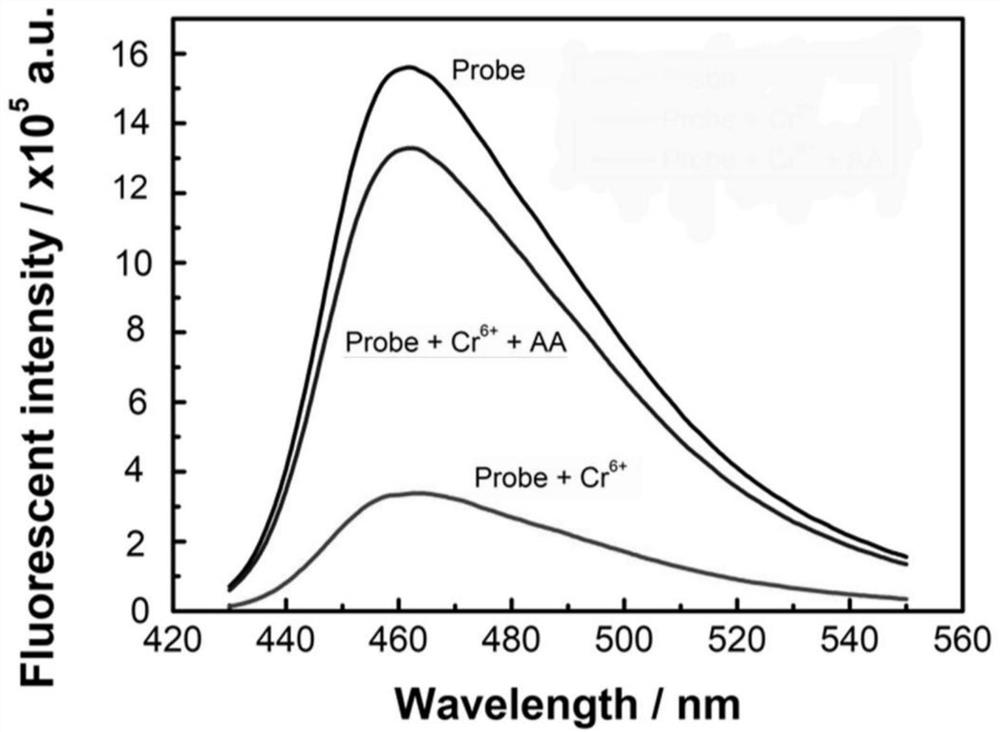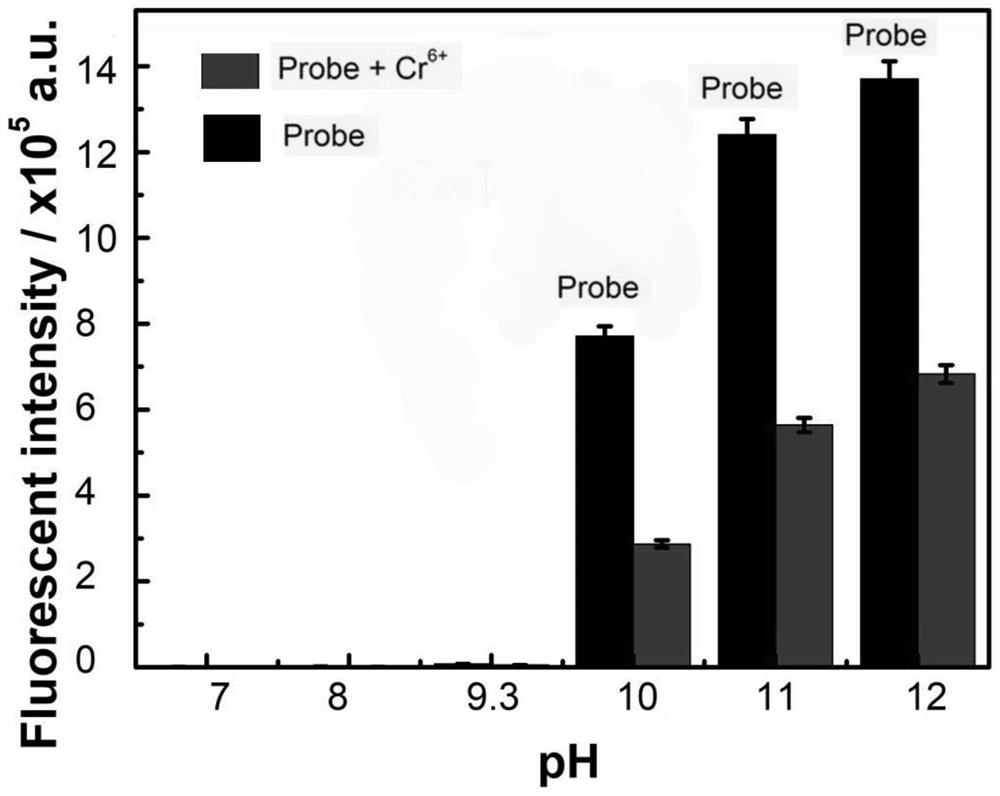Dopamine and resorcinol reaction product as well as preparation method and application thereof
A reaction product, resorcinol technology, applied in the field of analytical chemistry, can solve problems such as hereditary gene defects, death, irritation, and nasal septum perforation, and achieve good linear relationship, sensitive detection, and efficient detection.
- Summary
- Abstract
- Description
- Claims
- Application Information
AI Technical Summary
Problems solved by technology
Method used
Image
Examples
Embodiment 1
[0037] An organic fluorescent molecular reaction product formed by the reaction of dopamine and resorcinol, wherein the structural formula of the product is:
[0038] The main reaction formula in the preparation process is:
[0039] Concrete reaction process is as follows:
[0040] The dopamine and resorcinol are added into the neutral solution with pH=7 according to the molar ratio of 1:1, stirred and mixed and reacted to obtain the reaction product (probe).
[0041] The above preparation process is derived from the reference "Unimolecular Variant of the Fluorescence Turn-On Oxidative Coupling of Catecholamines with Resorcinols, ACS Omega 2019, 4, 1541-1548", and the synthesized product is also consistent with the product in the literature.
Embodiment 2
[0043] To the reaction product (probe) prepared in Example 1, in the reaction product (probe), add hexavalent chromium ion (Cr 6+ ) and ascorbic acid to form a mixture for fluorescence performance detection, mainly under the excitation of ultraviolet light with a wavelength of 420nm for fluorescence detection, the specific method is:
[0044] The reaction product (probe) prepared in Example 1 was dissolved in 40 mM PBS buffer solution, and the pH of the solution was adjusted to 11 to form a reaction product solution (probe solution) with a concentration of 10 μM, which was excited by ultraviolet light with a wavelength of 420 nm Test its fluorescence intensity at 25°C; then continue to add potassium dichromate to the above 10 μM reaction product solution (probe solution) to form a reaction product and chromium ion mixed solution (probe+Cr 6+ ), wherein the pH=11, Cr of the mixed solution are still adjusted 6+ The concentration is 1mM, and its fluorescence intensity is tested ...
Embodiment 3
[0047] The detection of hexavalent chromium ion (Cr) by fluorescence quenching method under different test conditions 6+ )Impact:
[0048] 1. Hexavalent chromium ion (Cr 6+ ) on the fluorescence intensity of the reaction product (probe)
[0049] The reaction product (probe) was added to the PBS buffer solution to form a reaction product solution (probe solution) with a concentration of 10 μM, and then divided into the same three solutions, and dichromic acid was added at 25°C, 37°C and 50°C respectively Potassium forms hexavalent chromium ions (Cr 6+ ), adjust the pH=11 of the solution in the whole process, test the fluorescence intensity before and after adding potassium dichromate under the ultraviolet light excitation of 420nm, compare the fluorescence intensity at the 460nm place at the emission wavelength, the result is as follows figure 2 shown. From figure 2 It can be seen that the fluorescence intensity at 460nm of the reaction product (probe) obtained by testin...
PUM
 Login to View More
Login to View More Abstract
Description
Claims
Application Information
 Login to View More
Login to View More - R&D
- Intellectual Property
- Life Sciences
- Materials
- Tech Scout
- Unparalleled Data Quality
- Higher Quality Content
- 60% Fewer Hallucinations
Browse by: Latest US Patents, China's latest patents, Technical Efficacy Thesaurus, Application Domain, Technology Topic, Popular Technical Reports.
© 2025 PatSnap. All rights reserved.Legal|Privacy policy|Modern Slavery Act Transparency Statement|Sitemap|About US| Contact US: help@patsnap.com



